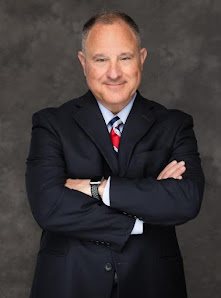One group for neo-Nazis, founded by a veteran of the Iraq
and Afghanistan wars, has taken the analogy to its logical conclusion, calling
itself “The Base” — a direct translation of the meaning of the word Al Qaeda.
The organization also uses similar black flag imagery. The Base maintains an
online library of terrorist manuals; the Al Qaeda publication Inspire taught
the Boston bombers how to build pressure-cooker explosives.
Perhaps most disturbing of all, both groups have real-world
war zones in which to learn combat. Jihadis had Afghanistan in the 1980s, the
Balkans in the 1990s and Syria today. White supremacists have the war in
eastern Ukraine, in which they are fighting on both sides. Dr. Kacper Rekawek,
a scholar who has studied the matter, estimates that 17,000 people from 50
countries, including the United States and many of its allies, have traveled to
fight in Ukraine. Those with ties to far-right militias in Ukraine include at least one of four Americans
indicted on a charge of promoting the deadly violence at the Unite the Right
rally in Charlottesville, Va., in 2017. The New Zealand mosque attacker claimed in his manifesto that he had traveled to Ukraine.
What we know for sure is that during his attack he wore a flak jacket bearing a symbol of one of the country’s
main ultranationalist groups.
Against this backdrop, it is hardly surprising to see the
white-supremacist threat growing inside the United States. A study by the
Anti-Defamation League found that, in 2018, right-wing extremists were
responsible for three times as many deaths in the United States as were
Islamists. The same study showed that 2018 was the deadliest year of right-wing
extremist violence since 1995 — when the Oklahoma City bombing took place.
Because of massacres like the one on Saturday in El Paso, the year 2019 may yet
prove worse.
Our intelligence and law-enforcement agencies are not blind
to the threat. In May, a senior F.B.I. official testified to
Congress that the bureau is pursuing about 850 domestic terrorism
investigations. But our current counterterrorism framework was set up, in the
immediate aftermath of 9/11, to deal exclusively with foreign terrorist groups
like Al Qaeda. For example, the law allows for the monitoring of communications
between people connected with foreign terrorist groups — even if they are
United States citizens operating on American soil — and the sharing of the
resulting intelligence among American agencies and with our allies. But those
monitoring and intelligence-sharing tools cannot be used against those
connected with terrorist groups based in the United States — no matter how
dangerous — because domestic terror supporters are protected by free speech
laws in ways that jihadis (including those who are United States citizens) are
not.
Since 2001, a long list of people have been indicted on a
charge of providing material support to designated foreign terrorist entities
like Al Qaeda. But for domestic terrorist organizations, material support
charges are impossible because there is no mechanism for designating domestic
terrorist groups as such. Moreover, domestic terror charges are harder to prove
and carry penalties inadequate to the gravity of the offense. Even the Oklahoma
City bomber, Timothy McVeigh, the worst domestic terrorist in the nation’s
history, was not charged with any terrorism offense for precisely this reason.
To read more CLICK HERE








No comments:
Post a Comment